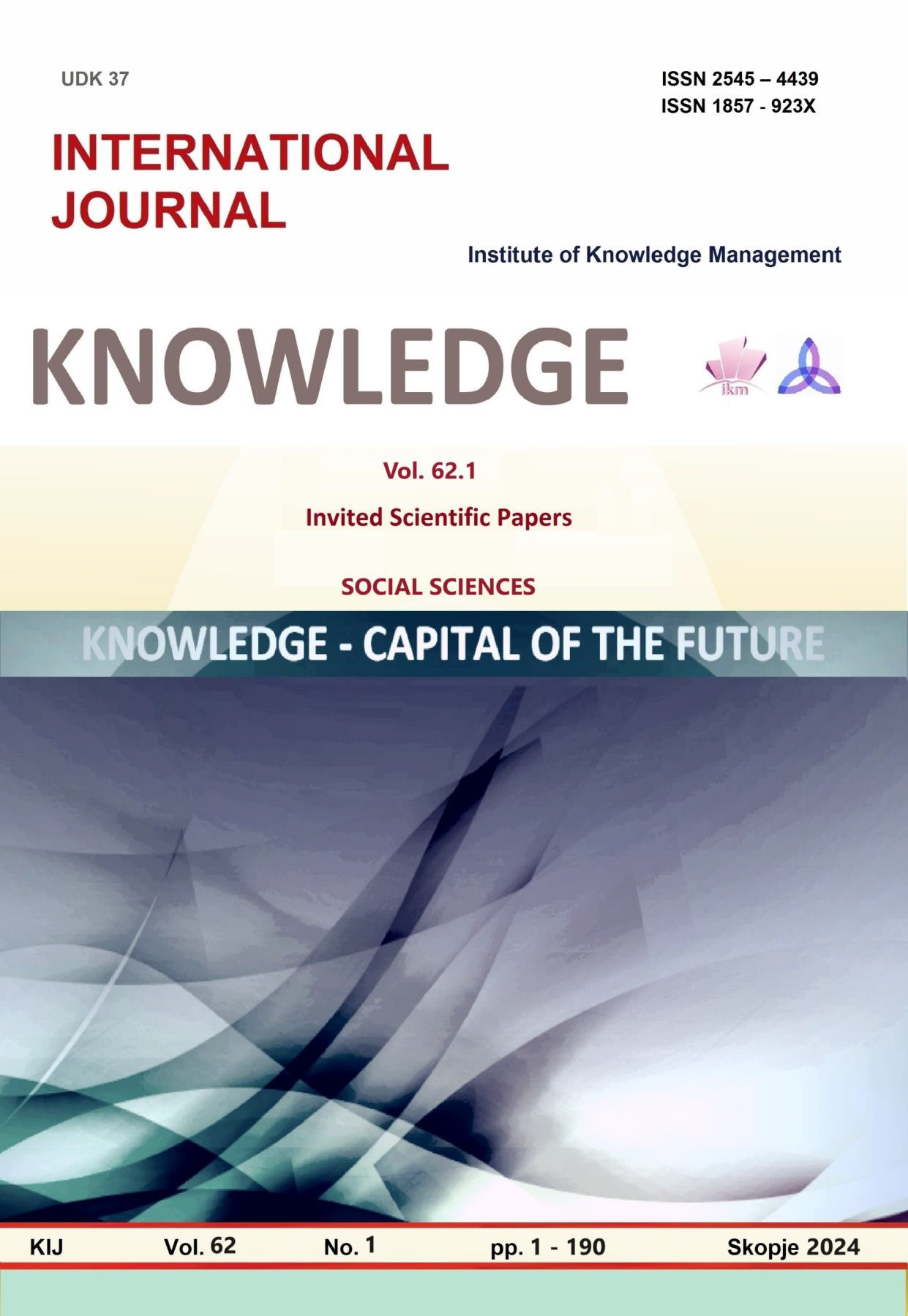THE LINK BETWEEN SKILLS MANAGEMENT AND STRATEGY IN SMEs
Keywords:
Skills management, strategy management, SMEs, HR, GRH, PMEAbstract
The modalities of articulation between strategy and skills management have been the subject of numerous studies, since 1959. The synthesis work which identifies three models of relationship between skills management (deduced, emergent and mixed) is very enlightening in this respect and will constitute one of the bases of our theoretical framework. The links between strategy and skills management: deduced, emergent and mixed model. The classic approach: the deduced or top-down model. The deduced or top-down model refers to the classic approach to strategic management developed in particular. This is a vertical alignment process in which we will first formulate a competitive strategy and then determine the individual skills necessary to implement this strategy. In this context, HRM is understood in its traditional conception (namely a support activity whose raison d'être is to facilitate the implementation of a strategy determined upstream). The main challenge for the HR function is to identify, develop and mobilize at the right time the skills required to support the strategic options chosen. In this first model of articulation, it is therefore the strategic decisions which influence HR policy, in particular the management of individual skills, in a downward relationship.
References
Bootz, J.-P., Schenk, E., & Sonntag, M. (2017, August 01). Gestion stratégique des compétences en PME. Revue Francaise de Gestion, Vol. 267(6), pp. 25–43. Retrieved from: https://doi.org/10.3166/rfg.2017.00152
Barrett, R., & Mayson, S. E. (2007, May 22). Human resource management in growing small firms. Journal of Small Business Management, Vol.14(2), pp. 307-320. Retrieved from: https://doi.org/10.1108/14626000710746727
Bayad, M., & Nebenhaus, D. (2012, February 16). Contribution à un modèle pyramidal de la gestion des ressources humaines en PME. Revue Internationale P.M.E. Vol. 11(2–3), 1998, pp. 161–178. Retrieved from: https://doi.org/https://doi.org/10.7202/1009048ar
Fabi, B., Lacoursière, R., Raymond, L., & St-Pierre, J. (2010, December 01). Capacités de GRH et productivité des PME industrielles: une perspective contingente. Management & Avenir, Vol. 39(9), pp. 110–123. Retrieved from: https://doi.org/10.3917/mav.039.0110
Filion, L. J., Brenner, G., Dionne, L., & Menzies, T. (2012, February 16). L’identification d’une occasion d’affaires en contexte d’entrepreneuriat ethnique. Revue Internationale P.M.E., Vol. 20(2), pp. 33–57. Retrieved from: https://doi.org/https://doi.org/10.7202/1008516ar
Guérin, G., & Wils, T. (2002, June 01). La gestion stratégique des ressources humaines. Gestion, Vol. 27(2), pp. 14–23. Retrieved from: https://doi.org/10.3917/riges.272.0014
Kotey, B., & Slade, P. (2005, January 01). Formal human resource management practices in small growing firms. Journal of Small Business Management, Vol. 43(1), pp. 16–40. Retrieved from: https://doi.org/10.1111/j.1540-627X.2004.00123.x
Messeghem, K. (2021). 10 idées clés sur l’accompagnement entrepreneurial (p.132). Éditions EMS, p. 132 (ISBN: 9782376874683)
Prahalad, C. K., & Hamel, G. (1990, May 15). The core competence of corporation. Harvard Business Review, Vol. 68(3), pp. 79-91. Retrieved from: https://hbr.org/1990/05/the-core-competence-of-the-corporation
Séville, M., & Wirtz, P. (2012, 28 September). Caractéristiques et dynamique de l’équipe dirigeante dans une jeune entreprise en hypercroissance. Revue Internationale P.M.E., Vol. 23(3–4), 2010, pp. 43–70. Retrieved from: https://doi.org/https://doi.org/10.7202/1012493ar
Voss, U., & Brettel, M. (2013, August 06). The effectiveness of management control in small firms: Perspectives from resource dependence theory. Journal of Small Business Management, Vol. 52(3), pp. 569–587. Retrieved from: https://doi.org/10.1111/jsbm.12050
Zahra, S. A., Randerson, K., & Fayolle, A. (2013, October 01). Corporate Entrepreneurship: where are we? Where can we go from here?. M@n@gement, Vol. 16(4), pp. 357–361. Retrieved from: https://doi.org/10.3917/mana.164.0357
https://www.redalyc.org/journal/5718/571873899004/html/, 2023
https://www.emerald.com/insight/content/doi/10.1108/IJM-03-2023-0150/full/html?skipTracking=true, 2023





